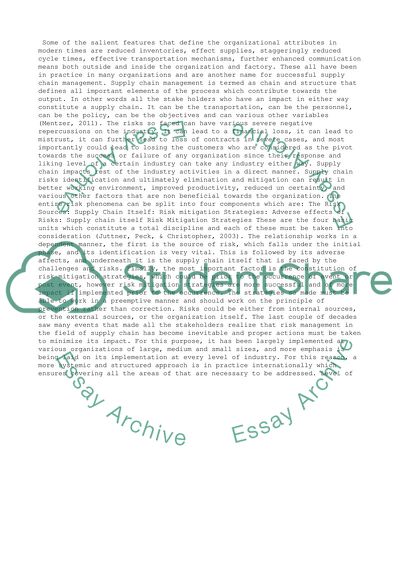Cite this document
(“Risk Management in supply chain management Essay”, n.d.)
Retrieved from https://studentshare.org/business/1398675-risk-management-in-supply-chain-management
Retrieved from https://studentshare.org/business/1398675-risk-management-in-supply-chain-management
(Risk Management in Supply Chain Management Essay)
https://studentshare.org/business/1398675-risk-management-in-supply-chain-management.
https://studentshare.org/business/1398675-risk-management-in-supply-chain-management.
“Risk Management in Supply Chain Management Essay”, n.d. https://studentshare.org/business/1398675-risk-management-in-supply-chain-management.


